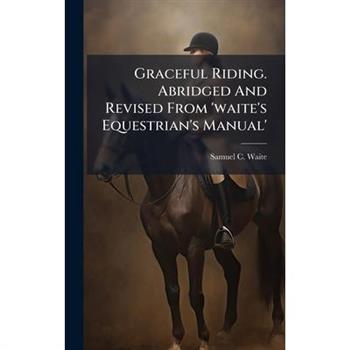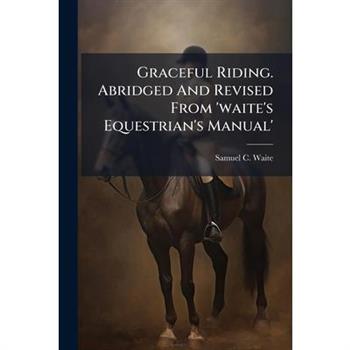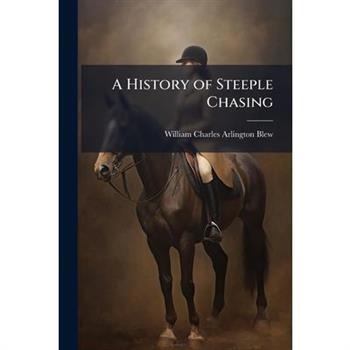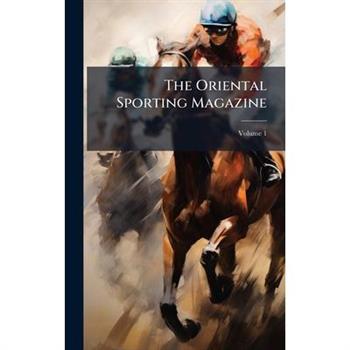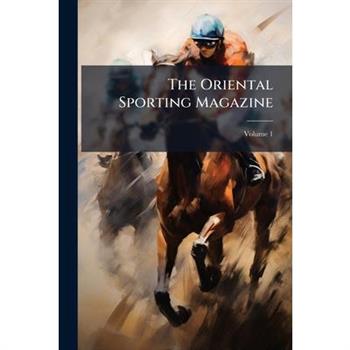A Book of Winter Sports
"A Book of Winter Sports" captures the essence and enthusiasm surrounding winter activities at the beginning of the 20th century. With the subtitle "An Attempt to Catch the Spirit of the Keen Joys of the Winter Season," this volume explores various winter sports and their cultural significance. Readers will discover a charming portrayal of winter recreation, reflecting the era's passion for outdoor pursuits and the unique challenges and pleasures of engaging with nature during the colder months. This book offers a glimpse into a bygone era, appealing to historians, sports enthusiasts, and anyone interested in the evolution of leisure activities. It serves as a valuable historical record, showcasing the equipment, techniques, and societal attitudes toward winter sports that have shaped modern recreational practices. Experience the keen joys of winter through the eyes of those who lived it over a century ago.This work has been selected by scholars as being culturally important, and is part of the knowledge base of civilization as we know it. This work was reproduced from the original artifact, and remains as true to the original work as possible. Therefore, you will see the original copyright references, library stamps (as most of these works have been housed in our most important libraries around the world), and other notations in the work.This work is in the public domain in the United States of America, and possibly other nations. Within the United States, you may freely copy and distribute this work, as no entity (individual or corporate) has a copyright on the body of the work.As a reproduction of a historical artifact, this work may contain missing or blurred pages, poor pictures, errant marks, etc. Scholars believe, and we concur, that this work is important enough to be preserved, reproduced, and made generally available to the public. We appreciate your support of the preservation process, and thank you for being an important part of keeping this knowledge alive and relevant.
Guide to the Turf; Or, Pocket Racing Companion for 1851; Containing the Nominations for 1851; Entries for the Great Stakes in 1852; Also, a Calendar of the Races in Great Britain and Ireland in 1850;
Guide to the Turf; Or, Pocket Racing Companion for 1851 is a historical record of horse racing in Great Britain and Ireland. Compiled by W. Ruff, this guide provides a detailed look at the sport during the mid-19th century. Inside, readers will find nominations for 1851 races, entries for the significant stakes in 1852, and a comprehensive calendar of races held throughout Great Britain and Ireland in 1850. Additional information includes the length of various courses, the prevailing laws of racing, and historical data on the Derby, Oaks, and St. Leger stakes. This volume offers enthusiasts and historians a snapshot of horse racing culture, rules, and prominent events of the era. It is a valuable resource for understanding the evolution of the sport and its social context.This work has been selected by scholars as being culturally important, and is part of the knowledge base of civilization as we know it. This work was reproduced from the original artifact, and remains as true to the original work as possible. Therefore, you will see the original copyright references, library stamps (as most of these works have been housed in our most important libraries around the world), and other notations in the work.This work is in the public domain in the United States of America, and possibly other nations. Within the United States, you may freely copy and distribute this work, as no entity (individual or corporate) has a copyright on the body of the work.As a reproduction of a historical artifact, this work may contain missing or blurred pages, poor pictures, errant marks, etc. Scholars believe, and we concur, that this work is important enough to be preserved, reproduced, and made generally available to the public. We appreciate your support of the preservation process, and thank you for being an important part of keeping this knowledge alive and relevant.
The Racing Calendar, for the Year 1874
The Racing Calendar, for the Year 1874 is a comprehensive record of horse racing events, results, and related information from that year. Compiled by C., J., E., and J. P. Weatherby, this volume offers a detailed look into the Victorian era of equestrian sport. It serves as an invaluable resource for historians, researchers, and enthusiasts interested in the history of horse racing. Containing a wealth of data, the calendar provides insights into the organization, participants, and outcomes of races during this period. Its detailed entries make it an essential reference for anyone seeking to understand the historical context of horse racing and its cultural significance in 19th-century society.This work has been selected by scholars as being culturally important, and is part of the knowledge base of civilization as we know it. This work was reproduced from the original artifact, and remains as true to the original work as possible. Therefore, you will see the original copyright references, library stamps (as most of these works have been housed in our most important libraries around the world), and other notations in the work.This work is in the public domain in the United States of America, and possibly other nations. Within the United States, you may freely copy and distribute this work, as no entity (individual or corporate) has a copyright on the body of the work.As a reproduction of a historical artifact, this work may contain missing or blurred pages, poor pictures, errant marks, etc. Scholars believe, and we concur, that this work is important enough to be preserved, reproduced, and made generally available to the public. We appreciate your support of the preservation process, and thank you for being an important part of keeping this knowledge alive and relevant.
The Racing Calendar, for the Year 1874
The Racing Calendar, for the Year 1874 is a comprehensive record of horse racing events, results, and related information from that year. Compiled by C., J., E., and J. P. Weatherby, this volume offers a detailed look into the Victorian era of equestrian sport. It serves as an invaluable resource for historians, researchers, and enthusiasts interested in the history of horse racing. Containing a wealth of data, the calendar provides insights into the organization, participants, and outcomes of races during this period. Its detailed entries make it an essential reference for anyone seeking to understand the historical context of horse racing and its cultural significance in 19th-century society.This work has been selected by scholars as being culturally important, and is part of the knowledge base of civilization as we know it. This work was reproduced from the original artifact, and remains as true to the original work as possible. Therefore, you will see the original copyright references, library stamps (as most of these works have been housed in our most important libraries around the world), and other notations in the work.This work is in the public domain in the United States of America, and possibly other nations. Within the United States, you may freely copy and distribute this work, as no entity (individual or corporate) has a copyright on the body of the work.As a reproduction of a historical artifact, this work may contain missing or blurred pages, poor pictures, errant marks, etc. Scholars believe, and we concur, that this work is important enough to be preserved, reproduced, and made generally available to the public. We appreciate your support of the preservation process, and thank you for being an important part of keeping this knowledge alive and relevant.
Guide to the Turf; Or, Pocket Racing Companion for 1851; Containing the Nominations for 1851; Entries for the Great Stakes in 1852; Also, a Calendar of the Races in Great Britain and Ireland in 1850;
Guide to the Turf; Or, Pocket Racing Companion for 1851 is a historical record of horse racing in Great Britain and Ireland. Compiled by W. Ruff, this guide provides a detailed look at the sport during the mid-19th century. Inside, readers will find nominations for 1851 races, entries for the significant stakes in 1852, and a comprehensive calendar of races held throughout Great Britain and Ireland in 1850. Additional information includes the length of various courses, the prevailing laws of racing, and historical data on the Derby, Oaks, and St. Leger stakes. This volume offers enthusiasts and historians a snapshot of horse racing culture, rules, and prominent events of the era. It is a valuable resource for understanding the evolution of the sport and its social context.This work has been selected by scholars as being culturally important, and is part of the knowledge base of civilization as we know it. This work was reproduced from the original artifact, and remains as true to the original work as possible. Therefore, you will see the original copyright references, library stamps (as most of these works have been housed in our most important libraries around the world), and other notations in the work.This work is in the public domain in the United States of America, and possibly other nations. Within the United States, you may freely copy and distribute this work, as no entity (individual or corporate) has a copyright on the body of the work.As a reproduction of a historical artifact, this work may contain missing or blurred pages, poor pictures, errant marks, etc. Scholars believe, and we concur, that this work is important enough to be preserved, reproduced, and made generally available to the public. We appreciate your support of the preservation process, and thank you for being an important part of keeping this knowledge alive and relevant.
Leave Me Alone, I Know What I’m Doing
Kimi R瓣ikk繹nen's Formula One career was anything but ordinary. From a modest upbringing in Espoo, Finland, to becoming one of the most celebrated and enigmatic champions in motorsport, R瓣ikk繹nen carved a path entirely on his own terms. With a world championship, 21 Grand Prix victories, and the record for the most starts in F1 history at the time of his retirement, he achieved everything the sport could offer-without ever conforming to its expectations.This definitive, fact-based biography traces his journey with narrative precision and respect for the truth behind the Iceman's mystique. It chronicles every chapter of his career, from his rapid ascent through junior categories and controversial F1 debut, to his time with iconic teams like McLaren, Ferrari, Lotus, and Alfa Romeo. Along the way, it reveals how R瓣ikk繹nen's relentless focus, engineering trust, and quiet determination reshaped how we understand greatness in the high-stakes world of Grand Prix racing.Eschewing speculation or embellishment, the book offers an unvarnished look at a driver who refused to play the game-and still won. This is the complete story of Kimi R瓣ikk繹nen: a man who didn't chase legacy, yet created one that endures beyond the checkered flag.
Tuning the Archer
This book contains exercises to help archers of all abilities improve their archery technique, moblity, fitness and balance. These are exercises you can do at home or at the range, (no need to go to the gym for any of them). They use just your own body, stretch bands and bows, and are aimed at the person behind the bow, not the bow itself. It is perfect for Coaches working with archers and for archers who wish to improve. Included is information on the back and shoulder assembly and how to try maintain them in a healthy condition using pre-hab and re-hab exercises. The basics of each bow discipline such as recurve, longbow, barebow and compound are the same and this book is aimed at Tuning the Archer rather than the bow so is suitable for archers of all bow types. Contents include: Equipment used for the exercisesDifferent types of exerciseWarm-ups and informationShoulder information and exercisesMain back muscles usedBalance and Core exercises and strengtheningBreathing exercisesDrills and SkillsShot CycleStance and PostureAlignment and DrawHook and Bow HandBand, bow and elbow sling exercisesComplete cycle and individual parts practiceDifferences between the Sexes This manual is aimed at all levels of archer, from the complete beginner to experienced competitors and those coming back to the sport after a break or injury and who wish to improve their technique, strength and shot. My hope is that it will help Coaches find the root cause of any problems with their archers and be able to help them, and it will help Archers learn more about their bodies and how to control them for shooting.
A Treatise On the Breeding, Training and Management of Horses [By W. Flint]
"A Treatise On the Breeding, Training and Management of Horses" by W. Flint, offers a comprehensive guide to understanding and caring for horses. This classic work covers essential aspects of equine management, from selecting and breeding the finest stock to the intricacies of training and day-to-day care. Flint's detailed instructions provide valuable insights into maintaining the health and well-being of horses, making it an indispensable resource for both novice and experienced horse enthusiasts. This book is a timeless reference for anyone passionate about horses, offering practical advice that remains relevant to modern equestrian practices.This work has been selected by scholars as being culturally important, and is part of the knowledge base of civilization as we know it. This work was reproduced from the original artifact, and remains as true to the original work as possible. Therefore, you will see the original copyright references, library stamps (as most of these works have been housed in our most important libraries around the world), and other notations in the work.This work is in the public domain in the United States of America, and possibly other nations. Within the United States, you may freely copy and distribute this work, as no entity (individual or corporate) has a copyright on the body of the work.As a reproduction of a historical artifact, this work may contain missing or blurred pages, poor pictures, errant marks, etc. Scholars believe, and we concur, that this work is important enough to be preserved, reproduced, and made generally available to the public. We appreciate your support of the preservation process, and thank you for being an important part of keeping this knowledge alive and relevant.
Handbook of Fen Skating, by N. and A. Goodman
Explore the fascinating history and techniques of fen skating with the "Handbook of Fen Skating," authored by N. and A. Goodman. This comprehensive guide delves into the unique winter sport that thrived in the fenlands of England, offering insights into its origins, evolution, and the specialized equipment used. Readers will discover detailed instructions on various skating techniques, from basic movements to advanced maneuvers, accompanied by practical tips for improving performance. Whether you're a history enthusiast or a winter sports aficionado, this handbook provides a valuable glimpse into a captivating aspect of sporting heritage.This work has been selected by scholars as being culturally important, and is part of the knowledge base of civilization as we know it. This work was reproduced from the original artifact, and remains as true to the original work as possible. Therefore, you will see the original copyright references, library stamps (as most of these works have been housed in our most important libraries around the world), and other notations in the work.This work is in the public domain in the United States of America, and possibly other nations. Within the United States, you may freely copy and distribute this work, as no entity (individual or corporate) has a copyright on the body of the work.As a reproduction of a historical artifact, this work may contain missing or blurred pages, poor pictures, errant marks, etc. Scholars believe, and we concur, that this work is important enough to be preserved, reproduced, and made generally available to the public. We appreciate your support of the preservation process, and thank you for being an important part of keeping this knowledge alive and relevant.
A Treatise On the Breeding, Training and Management of Horses [By W. Flint]
"A Treatise On the Breeding, Training and Management of Horses" by W. Flint, offers a comprehensive guide to understanding and caring for horses. This classic work covers essential aspects of equine management, from selecting and breeding the finest stock to the intricacies of training and day-to-day care. Flint's detailed instructions provide valuable insights into maintaining the health and well-being of horses, making it an indispensable resource for both novice and experienced horse enthusiasts. This book is a timeless reference for anyone passionate about horses, offering practical advice that remains relevant to modern equestrian practices.This work has been selected by scholars as being culturally important, and is part of the knowledge base of civilization as we know it. This work was reproduced from the original artifact, and remains as true to the original work as possible. Therefore, you will see the original copyright references, library stamps (as most of these works have been housed in our most important libraries around the world), and other notations in the work.This work is in the public domain in the United States of America, and possibly other nations. Within the United States, you may freely copy and distribute this work, as no entity (individual or corporate) has a copyright on the body of the work.As a reproduction of a historical artifact, this work may contain missing or blurred pages, poor pictures, errant marks, etc. Scholars believe, and we concur, that this work is important enough to be preserved, reproduced, and made generally available to the public. We appreciate your support of the preservation process, and thank you for being an important part of keeping this knowledge alive and relevant.
Handbook of Fen Skating, by N. and A. Goodman
Explore the fascinating history and techniques of fen skating with the "Handbook of Fen Skating," authored by N. and A. Goodman. This comprehensive guide delves into the unique winter sport that thrived in the fenlands of England, offering insights into its origins, evolution, and the specialized equipment used. Readers will discover detailed instructions on various skating techniques, from basic movements to advanced maneuvers, accompanied by practical tips for improving performance. Whether you're a history enthusiast or a winter sports aficionado, this handbook provides a valuable glimpse into a captivating aspect of sporting heritage.This work has been selected by scholars as being culturally important, and is part of the knowledge base of civilization as we know it. This work was reproduced from the original artifact, and remains as true to the original work as possible. Therefore, you will see the original copyright references, library stamps (as most of these works have been housed in our most important libraries around the world), and other notations in the work.This work is in the public domain in the United States of America, and possibly other nations. Within the United States, you may freely copy and distribute this work, as no entity (individual or corporate) has a copyright on the body of the work.As a reproduction of a historical artifact, this work may contain missing or blurred pages, poor pictures, errant marks, etc. Scholars believe, and we concur, that this work is important enough to be preserved, reproduced, and made generally available to the public. We appreciate your support of the preservation process, and thank you for being an important part of keeping this knowledge alive and relevant.
Graceful Riding. Abridged And Revised From 'waite's Equestrian's Manual'
Graceful Riding is an abridged and revised edition of 'Waite's Equestrian's Manual, ' offering timeless advice on the art and skill of horsemanship. Focusing on the principles of graceful and effective riding, this manual provides practical guidance for both novice and experienced riders. Samuel C. Waite distills essential techniques, emphasizing the importance of harmony between horse and rider.This edition retains the core wisdom of the original while presenting it in a concise and accessible format, making it an invaluable resource for anyone seeking to improve their riding ability and deepen their understanding of equestrianism. Discover the enduring principles that underpin skillful and graceful riding in this classic guide.This work has been selected by scholars as being culturally important, and is part of the knowledge base of civilization as we know it. This work was reproduced from the original artifact, and remains as true to the original work as possible. Therefore, you will see the original copyright references, library stamps (as most of these works have been housed in our most important libraries around the world), and other notations in the work.This work is in the public domain in the United States of America, and possibly other nations. Within the United States, you may freely copy and distribute this work, as no entity (individual or corporate) has a copyright on the body of the work.As a reproduction of a historical artifact, this work may contain missing or blurred pages, poor pictures, errant marks, etc. Scholars believe, and we concur, that this work is important enough to be preserved, reproduced, and made generally available to the public. We appreciate your support of the preservation process, and thank you for being an important part of keeping this knowledge alive and relevant.
Women Working in Sport
The sport industry has long operated on structures and systems that weren't built for women, especially not for those working behind the scenes as leaders, coaches, developers, or support staff. While progress has been made, too many women still face invisible barriers, cultural bias and professional compromise simply for existing in spaces that weren't designed with them in mind.Women Working in Sport offers a fresh, unapologetic lens on these challenges and moves decisively toward solutions. Through the voices of coaches, psychologists, administrators, academics and directors, this book sheds light on what's holding women back and more importantly, how we move forward.Each chapter is a conversation, a lived experience and a call to action offering not just critique but real insight for organisations serious about equity, wellbeing and performance.For policy-makers, system leaders and anyone shaping the future of sport, this is more than a book. It's a practical resource, a challenge to the status quo, and a roadmap toward building environments where women not only work they thrive.
Graceful Riding. Abridged And Revised From 'waite's Equestrian's Manual'
Graceful Riding is an abridged and revised edition of 'Waite's Equestrian's Manual, ' offering timeless advice on the art and skill of horsemanship. Focusing on the principles of graceful and effective riding, this manual provides practical guidance for both novice and experienced riders. Samuel C. Waite distills essential techniques, emphasizing the importance of harmony between horse and rider.This edition retains the core wisdom of the original while presenting it in a concise and accessible format, making it an invaluable resource for anyone seeking to improve their riding ability and deepen their understanding of equestrianism. Discover the enduring principles that underpin skillful and graceful riding in this classic guide.This work has been selected by scholars as being culturally important, and is part of the knowledge base of civilization as we know it. This work was reproduced from the original artifact, and remains as true to the original work as possible. Therefore, you will see the original copyright references, library stamps (as most of these works have been housed in our most important libraries around the world), and other notations in the work.This work is in the public domain in the United States of America, and possibly other nations. Within the United States, you may freely copy and distribute this work, as no entity (individual or corporate) has a copyright on the body of the work.As a reproduction of a historical artifact, this work may contain missing or blurred pages, poor pictures, errant marks, etc. Scholars believe, and we concur, that this work is important enough to be preserved, reproduced, and made generally available to the public. We appreciate your support of the preservation process, and thank you for being an important part of keeping this knowledge alive and relevant.
Italian Sabre Martial Art
Step into the world of Italy's martial prowess with this definitive guide. "Italian Sabre Martial Art" isn't just a historical account; it's a call to arms for the modern martial artist seeking to harness the power and precision of the 19th-century sabre.In a time when the sabre was both a weapon of war and a badge of honor, Italy carved its niche with unparalleled techniques and combat philosophies. This book resurrects that legacy, tailored for today's martial artist, blending age-old wisdom with contemporary insights.Through detailed annotated photo sequences, experience the fluidity, agility, and strategy that made the Italian sabre a force to be reckoned with. But this journey goes beyond mere techniques. It delves into the heart of a warrior culture, where every strike tells a story, and every stance is a testament to years of discipline.For the modern martial artist, this isn't just about learning a new weapon. It's about embracing a holistic combat philosophy, understanding the rhythm of a duel, and mastering the dance of battle. Whether you're a seasoned fighter or just starting your martial journey, this book offers a unique blend of the old and new, challenging you to elevate your skills, mindset, and understanding of the art of combat.
Rota Vitae
Rota Vitae: The Cyclist's Guide to Health & Rational Enjoyment, penned by William Gordon Stables, offers a fascinating glimpse into the late 19th-century enthusiasm for cycling. More than just a manual, it's a comprehensive guide to achieving optimal health through the then-novel activity of cycling. Stables expertly blends practical advice with philosophical musings, advocating for a balanced lifestyle where cycling plays a central role in physical and mental well-being.Readers will discover detailed instructions on selecting the right bicycle, mastering riding techniques, and maintaining their machine, all while absorbing Stables' passionate arguments for cycling's transformative power. This book is a valuable resource for understanding the historical context of cycling's rise in popularity and its enduring appeal as a means of staying healthy and enjoying the outdoors. Rediscover the joy of cycling with Stables' timeless wisdom in "Rota Vitae."This work has been selected by scholars as being culturally important, and is part of the knowledge base of civilization as we know it. This work was reproduced from the original artifact, and remains as true to the original work as possible. Therefore, you will see the original copyright references, library stamps (as most of these works have been housed in our most important libraries around the world), and other notations in the work.This work is in the public domain in the United States of America, and possibly other nations. Within the United States, you may freely copy and distribute this work, as no entity (individual or corporate) has a copyright on the body of the work.As a reproduction of a historical artifact, this work may contain missing or blurred pages, poor pictures, errant marks, etc. Scholars believe, and we concur, that this work is important enough to be preserved, reproduced, and made generally available to the public. We appreciate your support of the preservation process, and thank you for being an important part of keeping this knowledge alive and relevant.
Dumb Bell Exercises
Dumb Bell Exercises by Gustav Herrman Bojus is a vintage guide to physical fitness using dumbbells. This practical manual offers a comprehensive set of exercises designed to improve strength, coordination, and overall health. Originally published in the late 19th or early 20th century, this book provides a fascinating glimpse into the history of physical culture and exercise techniques. Bojus's instructions are clear and concise, making it easy for readers to follow along and incorporate these exercises into their routines. Whether you're a fitness enthusiast, a historian of physical culture, or simply interested in alternative exercise methods, Dumb Bell Exercises offers valuable insights and timeless advice for achieving physical well-being.This work has been selected by scholars as being culturally important, and is part of the knowledge base of civilization as we know it. This work was reproduced from the original artifact, and remains as true to the original work as possible. Therefore, you will see the original copyright references, library stamps (as most of these works have been housed in our most important libraries around the world), and other notations in the work.This work is in the public domain in the United States of America, and possibly other nations. Within the United States, you may freely copy and distribute this work, as no entity (individual or corporate) has a copyright on the body of the work.As a reproduction of a historical artifact, this work may contain missing or blurred pages, poor pictures, errant marks, etc. Scholars believe, and we concur, that this work is important enough to be preserved, reproduced, and made generally available to the public. We appreciate your support of the preservation process, and thank you for being an important part of keeping this knowledge alive and relevant.
The World of the Gladiator
The figure of the gladiator is as compelling to us as it was to the Romans. Why are we drawn to this ancient blood sport? The usual explanation of the savagery lurking beneath our veneer of civilization is too simplistic. Gladiatorial combat has always been far more than just an excuse for the enjoyment of violence. From its origins in the funerary religious practices of Republican Rome to the extreme form of entertainment we recognize today, the bloody business of the arena evolved into a microcosm of the Roman Empire, a self-contained world reflecting the culture, attitudes and history of Rome itself. The author brings the games and the gladiators into focus, placing them in their historical and cultural context. Using evidence from all over the Roman world, including fresh archaeological discoveries, the minutiae of the arena are set out and discussed. A picture of the gladiator's life is built up, from training and diet, to social status and mortality rates. The history of the amphitheater, that iconic symbol of bloodletting, is also traced alongside the evolution of the gladiator. Films like Gladiator and Spartacus demonstrate that the idea of two men fighting each other for their lives has lost none of its power in over 2000 years. The particular persistence of this public taste for spectacle is explored, with unavoidable comparisons to the modern world.
Young Race-horses; Fresh Pastures for Rearing
In "Young Race-horses; Fresh Pastures for Rearing," Sir Walter Gilbey offers insights into the rearing of young racehorses, drawing from his extensive experience and knowledge. This book delves into the essential aspects of nurturing these animals, covering topics such as selecting suitable pastures, providing proper nutrition, and implementing effective training regimens. Gilbey's practical approach makes this work valuable for both novice and experienced horse breeders.Originally published in 1910, this classic text provides a fascinating glimpse into the practices of early 20th-century equine management. Gilbey's expertise ensures that "Young Race-horses" remains a relevant resource for anyone interested in the history and techniques of horse racing and breeding.This work has been selected by scholars as being culturally important, and is part of the knowledge base of civilization as we know it. This work was reproduced from the original artifact, and remains as true to the original work as possible. Therefore, you will see the original copyright references, library stamps (as most of these works have been housed in our most important libraries around the world), and other notations in the work.This work is in the public domain in the United States of America, and possibly other nations. Within the United States, you may freely copy and distribute this work, as no entity (individual or corporate) has a copyright on the body of the work.As a reproduction of a historical artifact, this work may contain missing or blurred pages, poor pictures, errant marks, etc. Scholars believe, and we concur, that this work is important enough to be preserved, reproduced, and made generally available to the public. We appreciate your support of the preservation process, and thank you for being an important part of keeping this knowledge alive and relevant.
Dumb Bell Exercises
Dumb Bell Exercises by Gustav Herrman Bojus is a vintage guide to physical fitness using dumbbells. This practical manual offers a comprehensive set of exercises designed to improve strength, coordination, and overall health. Originally published in the late 19th or early 20th century, this book provides a fascinating glimpse into the history of physical culture and exercise techniques. Bojus's instructions are clear and concise, making it easy for readers to follow along and incorporate these exercises into their routines. Whether you're a fitness enthusiast, a historian of physical culture, or simply interested in alternative exercise methods, Dumb Bell Exercises offers valuable insights and timeless advice for achieving physical well-being.This work has been selected by scholars as being culturally important, and is part of the knowledge base of civilization as we know it. This work was reproduced from the original artifact, and remains as true to the original work as possible. Therefore, you will see the original copyright references, library stamps (as most of these works have been housed in our most important libraries around the world), and other notations in the work.This work is in the public domain in the United States of America, and possibly other nations. Within the United States, you may freely copy and distribute this work, as no entity (individual or corporate) has a copyright on the body of the work.As a reproduction of a historical artifact, this work may contain missing or blurred pages, poor pictures, errant marks, etc. Scholars believe, and we concur, that this work is important enough to be preserved, reproduced, and made generally available to the public. We appreciate your support of the preservation process, and thank you for being an important part of keeping this knowledge alive and relevant.
Long and Low
This short book examines the history, origins and unintended consequences of the commonly used and widely accepted practice of "long and low" riding and training in dressage. International rider and trainer Paul Belasik explains the little-known origins of the mysterious practice that has evolved into a major modern-day controversy.
Ski-runs in the High Alps
"Ski-runs in the High Alps" offers a fascinating glimpse into the early days of alpine skiing. Written by Fran癟ois Fr矇d矇ric Roget, this vintage guide provides a detailed account of ski expeditions across the stunning landscapes of the High Alps. Published in 1913, the book captures the spirit of adventure and the burgeoning popularity of winter sports in Europe. Roget's work not only serves as a practical guide for skiers but also as a historical document, illustrating the techniques, equipment, and challenges faced by pioneers of the sport. Readers will appreciate the vivid descriptions of the alpine scenery and the meticulous planning required for these early ski adventures. This book is a valuable resource for historians, winter sports enthusiasts, and anyone interested in the cultural history of the Alps.This work has been selected by scholars as being culturally important, and is part of the knowledge base of civilization as we know it. This work was reproduced from the original artifact, and remains as true to the original work as possible. Therefore, you will see the original copyright references, library stamps (as most of these works have been housed in our most important libraries around the world), and other notations in the work.This work is in the public domain in the United States of America, and possibly other nations. Within the United States, you may freely copy and distribute this work, as no entity (individual or corporate) has a copyright on the body of the work.As a reproduction of a historical artifact, this work may contain missing or blurred pages, poor pictures, errant marks, etc. Scholars believe, and we concur, that this work is important enough to be preserved, reproduced, and made generally available to the public. We appreciate your support of the preservation process, and thank you for being an important part of keeping this knowledge alive and relevant.
Group Dynamics in Exercise and Sport Psychology
This book explores the unique psychological dynamics that emerge in sport and exercise groups. It provides a clear and thorough guide to contemporary theory, research, and applied practice, covering core themes and cutting-edge topics as well as highlighting directions for future research.
Standard American Billiard Tables.
Explore the world of billiards in the late 19th century with "Standard American Billiard Tables," a fascinating glimpse into the manufacturing and marketing of pool tables. Published in 1876 by H. W. Collender's of New York, this vintage catalog offers detailed descriptions and illustrations of their standard billiard tables. A valuable resource for historians, collectors, and anyone interested in the history of sports and recreation. Discover the craftsmanship and design that made Collender's a leading name in American billiards.This work has been selected by scholars as being culturally important, and is part of the knowledge base of civilization as we know it. This work was reproduced from the original artifact, and remains as true to the original work as possible. Therefore, you will see the original copyright references, library stamps (as most of these works have been housed in our most important libraries around the world), and other notations in the work.This work is in the public domain in the United States of America, and possibly other nations. Within the United States, you may freely copy and distribute this work, as no entity (individual or corporate) has a copyright on the body of the work.As a reproduction of a historical artifact, this work may contain missing or blurred pages, poor pictures, errant marks, etc. Scholars believe, and we concur, that this work is important enough to be preserved, reproduced, and made generally available to the public. We appreciate your support of the preservation process, and thank you for being an important part of keeping this knowledge alive and relevant.
Young Race-horses; Fresh Pastures for Rearing
In "Young Race-horses; Fresh Pastures for Rearing," Sir Walter Gilbey offers insights into the rearing of young racehorses, drawing from his extensive experience and knowledge. This book delves into the essential aspects of nurturing these animals, covering topics such as selecting suitable pastures, providing proper nutrition, and implementing effective training regimens. Gilbey's practical approach makes this work valuable for both novice and experienced horse breeders.Originally published in 1910, this classic text provides a fascinating glimpse into the practices of early 20th-century equine management. Gilbey's expertise ensures that "Young Race-horses" remains a relevant resource for anyone interested in the history and techniques of horse racing and breeding.This work has been selected by scholars as being culturally important, and is part of the knowledge base of civilization as we know it. This work was reproduced from the original artifact, and remains as true to the original work as possible. Therefore, you will see the original copyright references, library stamps (as most of these works have been housed in our most important libraries around the world), and other notations in the work.This work is in the public domain in the United States of America, and possibly other nations. Within the United States, you may freely copy and distribute this work, as no entity (individual or corporate) has a copyright on the body of the work.As a reproduction of a historical artifact, this work may contain missing or blurred pages, poor pictures, errant marks, etc. Scholars believe, and we concur, that this work is important enough to be preserved, reproduced, and made generally available to the public. We appreciate your support of the preservation process, and thank you for being an important part of keeping this knowledge alive and relevant.
Standing Resolute
Standing ResoluteLiving Boldly In Christ We desperately need spiritual courage in today's world. Like the football players I have coached in college, Christians face intense pressure, uncertainty, and hostility. Often, we must stand alone against formidable odds, confronted with trials designed to test our faith and resolve. But just as my players learn to anticipate greatness on the football field, believers should live with a similar expectancy-an assurance that God is working powerfully, even amid adversity.The reality is stark: the world we live in today is openly hostile to Christ and those who follow Him. Around the globe, believers face persecution, imprisonment, and even martyrdom. Yet, in America, comfort has often led to spiritual complacency. Many drift casually in and out of commitment, unaware of the high stakes of their faith. The story of Daniel in the Bible offers lessons on standing firm amidst pressures to conform.It's time to embrace courageous faith, resolve to live uncompromisingly for Christ, and anticipate greatness, not in our strength but through the power and grace of the One who empowers us. Let's stand resolute together. Ron Brown has a long-standing association with Husker football, having served as an assistant coach for 24 seasons. He became the Director of Player Support and Outreach for Nebraska football in 2018 before assuming his current role of coaching punt returners, fullbacks and assisting the running backs coach. He co-founded Kingdom Sports in 2018 and has been a well-known speaker at FCA and churches throughout his career.
Training and Competing with a Continuous Glucose Monitor
Learn everything you need to know about how continuous glucose monitors can enhance your sports training programs for cycling, racing, swimming, and more from the coauthor of best-selling Training and Racing with a Power Meter. In the very first comprehensive guide to utilizing continuous glucose monitors (CGM) for enhancing sports training, Training and Competing with a Continuous Glucose Monitor will first explain what CGMs are and how they can help today's athlete maximize performance. You'll discover how and why seeing your continuous blood glucose with a CGM in real time will give you an edge in your sport with the ability to: Optimize the timing of nutrition intake Determine the correct serving of foods to positively impact energy levels Understand the proper type of foods to use to "prime" your system before training or an event Recognize patterns of poor nutrition and correct them Learn your blood glucose highs and lows throughout the day to correct them for better glucose stability And so much more Whether you are an endurance athlete or casual exerciser, pioneering cycling coach Hunter Allen gives you step-by-step directions for using a CGM to clearly understand and use this technology to enhance your ability.
Group Dynamics in Exercise and Sport Psychology
This book explores the unique psychological dynamics that emerge in sport and exercise groups. It provides a clear and thorough guide to contemporary theory, research, and applied practice, covering core themes and cutting-edge topics as well as highlighting directions for future research.
Rota Vitae
Rota Vitae: The Cyclist's Guide to Health & Rational Enjoyment, penned by William Gordon Stables, offers a fascinating glimpse into the late 19th-century enthusiasm for cycling. More than just a manual, it's a comprehensive guide to achieving optimal health through the then-novel activity of cycling. Stables expertly blends practical advice with philosophical musings, advocating for a balanced lifestyle where cycling plays a central role in physical and mental well-being.Readers will discover detailed instructions on selecting the right bicycle, mastering riding techniques, and maintaining their machine, all while absorbing Stables' passionate arguments for cycling's transformative power. This book is a valuable resource for understanding the historical context of cycling's rise in popularity and its enduring appeal as a means of staying healthy and enjoying the outdoors. Rediscover the joy of cycling with Stables' timeless wisdom in "Rota Vitae."This work has been selected by scholars as being culturally important, and is part of the knowledge base of civilization as we know it. This work was reproduced from the original artifact, and remains as true to the original work as possible. Therefore, you will see the original copyright references, library stamps (as most of these works have been housed in our most important libraries around the world), and other notations in the work.This work is in the public domain in the United States of America, and possibly other nations. Within the United States, you may freely copy and distribute this work, as no entity (individual or corporate) has a copyright on the body of the work.As a reproduction of a historical artifact, this work may contain missing or blurred pages, poor pictures, errant marks, etc. Scholars believe, and we concur, that this work is important enough to be preserved, reproduced, and made generally available to the public. We appreciate your support of the preservation process, and thank you for being an important part of keeping this knowledge alive and relevant.
Standard American Billiard Tables.
Explore the world of billiards in the late 19th century with "Standard American Billiard Tables," a fascinating glimpse into the manufacturing and marketing of pool tables. Published in 1876 by H. W. Collender's of New York, this vintage catalog offers detailed descriptions and illustrations of their standard billiard tables. A valuable resource for historians, collectors, and anyone interested in the history of sports and recreation. Discover the craftsmanship and design that made Collender's a leading name in American billiards.This work has been selected by scholars as being culturally important, and is part of the knowledge base of civilization as we know it. This work was reproduced from the original artifact, and remains as true to the original work as possible. Therefore, you will see the original copyright references, library stamps (as most of these works have been housed in our most important libraries around the world), and other notations in the work.This work is in the public domain in the United States of America, and possibly other nations. Within the United States, you may freely copy and distribute this work, as no entity (individual or corporate) has a copyright on the body of the work.As a reproduction of a historical artifact, this work may contain missing or blurred pages, poor pictures, errant marks, etc. Scholars believe, and we concur, that this work is important enough to be preserved, reproduced, and made generally available to the public. We appreciate your support of the preservation process, and thank you for being an important part of keeping this knowledge alive and relevant.
Seats and Saddles
"Seats and Saddles" is a fascinating glimpse into the world of horsemanship in the 19th century. Written by Francis Dwyer and originally published in 1868, this book offers practical advice and insights into the art of riding and managing horses. From selecting the right saddle to mastering various riding techniques, Dwyer's expertise provides a comprehensive guide for both novice and experienced riders. Beyond its practical value, "Seats and Saddles" also serves as a valuable historical document, offering a window into the social and cultural significance of horses in the Victorian era. With detailed descriptions and engaging anecdotes, Dwyer brings the world of equestrianism to life, making this book a timeless resource for anyone interested in the history of riding and the enduring bond between humans and horses.This work has been selected by scholars as being culturally important, and is part of the knowledge base of civilization as we know it. This work was reproduced from the original artifact, and remains as true to the original work as possible. Therefore, you will see the original copyright references, library stamps (as most of these works have been housed in our most important libraries around the world), and other notations in the work.This work is in the public domain in the United States of America, and possibly other nations. Within the United States, you may freely copy and distribute this work, as no entity (individual or corporate) has a copyright on the body of the work.As a reproduction of a historical artifact, this work may contain missing or blurred pages, poor pictures, errant marks, etc. Scholars believe, and we concur, that this work is important enough to be preserved, reproduced, and made generally available to the public. We appreciate your support of the preservation process, and thank you for being an important part of keeping this knowledge alive and relevant.
A Brief History of the North American Gymnastic Union
Dive into the fascinating origins of gymnastics in North America with "A Brief History of the North American Gymnastic Union" by Henry Christian Anton Metzner. This meticulously researched account explores the rise of the Turnverein movement and its profound impact on the development of gymnastics across the continent.Metzner details the establishment and growth of the North American Gymnastic Union, highlighting its key figures, pivotal events, and the organization's commitment to physical education and community engagement. Discover how this unique blend of German tradition and American innovation shaped the landscape of sports and fitness. A valuable resource for historians, sports enthusiasts, and anyone interested in the cultural heritage of gymnastics.This work has been selected by scholars as being culturally important, and is part of the knowledge base of civilization as we know it. This work was reproduced from the original artifact, and remains as true to the original work as possible. Therefore, you will see the original copyright references, library stamps (as most of these works have been housed in our most important libraries around the world), and other notations in the work.This work is in the public domain in the United States of America, and possibly other nations. Within the United States, you may freely copy and distribute this work, as no entity (individual or corporate) has a copyright on the body of the work.As a reproduction of a historical artifact, this work may contain missing or blurred pages, poor pictures, errant marks, etc. Scholars believe, and we concur, that this work is important enough to be preserved, reproduced, and made generally available to the public. We appreciate your support of the preservation process, and thank you for being an important part of keeping this knowledge alive and relevant.
A History of Steeple Chasing
A History of Steeple Chasing, by William Charles Arlington Blew, offers a comprehensive look at the development of this exciting equestrian sport. Originally published in 1901, this meticulously researched volume delves into the origins of steeplechasing, tracing its evolution from informal cross-country races to the more structured events of the late 19th century. Blew's work captures the spirit of the sport, detailing famous races, notable horses, and the personalities who shaped its early years. This book provides valuable insights into the social and cultural context of steeplechasing within British sporting history. With detailed accounts and historical anecdotes, 'A History of Steeple Chasing' remains an essential resource for anyone interested in the history of horse racing and equestrian pursuits. This work has been selected by scholars as being culturally important, and is part of the knowledge base of civilization as we know it. This work was reproduced from the original artifact, and remains as true to the original work as possible. Therefore, you will see the original copyright references, library stamps (as most of these works have been housed in our most important libraries around the world), and other notations in the work.This work is in the public domain in the United States of America, and possibly other nations. Within the United States, you may freely copy and distribute this work, as no entity (individual or corporate) has a copyright on the body of the work.As a reproduction of a historical artifact, this work may contain missing or blurred pages, poor pictures, errant marks, etc. Scholars believe, and we concur, that this work is important enough to be preserved, reproduced, and made generally available to the public. We appreciate your support of the preservation process, and thank you for being an important part of keeping this knowledge alive and relevant.
Billiards
"Billiards: Game, 500 Up" by Edward Russell Mardon, originally published in 1849, offers a fascinating glimpse into the world of billiards during the mid-19th century. This meticulously detailed account provides enthusiasts and historians alike with a comprehensive understanding of the game as it was played. The book features diagrams illustrating ball positions from the last nine breaks, accompanied by 111 additional diagrams designed for practice. Mardon's work includes insightful observations and practical advice, highlighting the advantages of strategic play. This edition revives a classic text, making it accessible to modern readers interested in the history and techniques of billiards. A valuable resource for both players and researchers, this book captures the enduring appeal of a timeless game.This work has been selected by scholars as being culturally important, and is part of the knowledge base of civilization as we know it. This work was reproduced from the original artifact, and remains as true to the original work as possible. Therefore, you will see the original copyright references, library stamps (as most of these works have been housed in our most important libraries around the world), and other notations in the work.This work is in the public domain in the United States of America, and possibly other nations. Within the United States, you may freely copy and distribute this work, as no entity (individual or corporate) has a copyright on the body of the work.As a reproduction of a historical artifact, this work may contain missing or blurred pages, poor pictures, errant marks, etc. Scholars believe, and we concur, that this work is important enough to be preserved, reproduced, and made generally available to the public. We appreciate your support of the preservation process, and thank you for being an important part of keeping this knowledge alive and relevant.
A Treatise On the Care, Treatment, and Training of the English Race Horse
A Treatise On the Care, Treatment, and Training of the English Race Horse, Volume 1 by Richard Darvill offers a detailed look into the world of 19th-century equine management. Presented as a series of "rough notes," this book delves into the specifics of raising and training racehorses during this era. The work covers the intricacies of equine health, offering insights into the veterinary practices of the time. This volume provides valuable historical context for those interested in the evolution of horse racing and animal husbandry. Richard Darvill's detailed observations and practical advice make this treatise an invaluable resource for understanding the care and training methods employed in the development of the English racehorse.This work has been selected by scholars as being culturally important, and is part of the knowledge base of civilization as we know it. This work was reproduced from the original artifact, and remains as true to the original work as possible. Therefore, you will see the original copyright references, library stamps (as most of these works have been housed in our most important libraries around the world), and other notations in the work.This work is in the public domain in the United States of America, and possibly other nations. Within the United States, you may freely copy and distribute this work, as no entity (individual or corporate) has a copyright on the body of the work.As a reproduction of a historical artifact, this work may contain missing or blurred pages, poor pictures, errant marks, etc. Scholars believe, and we concur, that this work is important enough to be preserved, reproduced, and made generally available to the public. We appreciate your support of the preservation process, and thank you for being an important part of keeping this knowledge alive and relevant.
Practical Horsemanship and Riding for Ladies
Practical Horsemanship and Riding for Ladies, penned by William Alexander Kerr, offers a comprehensive guide to the art of horsemanship, specifically tailored for women. Originally published in 1887, this book provides invaluable insights into the techniques, etiquette, and practical considerations of riding during the Victorian era. Kerr's detailed instructions cover everything from selecting the right horse and equipment to mastering various riding styles and maneuvers. Beyond its practical advice, the book offers a fascinating glimpse into the social history of the time, revealing the role of women in equestrian pursuits and the societal expectations surrounding their participation. Whether you are a seasoned equestrian enthusiast or a curious reader interested in historical perspectives on riding, Kerr's work remains a valuable and engaging resource.This work has been selected by scholars as being culturally important, and is part of the knowledge base of civilization as we know it. This work was reproduced from the original artifact, and remains as true to the original work as possible. Therefore, you will see the original copyright references, library stamps (as most of these works have been housed in our most important libraries around the world), and other notations in the work.This work is in the public domain in the United States of America, and possibly other nations. Within the United States, you may freely copy and distribute this work, as no entity (individual or corporate) has a copyright on the body of the work.As a reproduction of a historical artifact, this work may contain missing or blurred pages, poor pictures, errant marks, etc. Scholars believe, and we concur, that this work is important enough to be preserved, reproduced, and made generally available to the public. We appreciate your support of the preservation process, and thank you for being an important part of keeping this knowledge alive and relevant.
A Treatise On the Care, Treatment, and Training of the English Race Horse
"A Treatise On the Care, Treatment, and Training of the English Race Horse, Volume 2: In a Series of Rough Notes" offers a detailed look into the world of 19th-century horse racing and equine management. Authored by Richard Darvill, this volume provides invaluable insights into the methods and practices used to care for and train English racehorses during this period. Readers will discover the intricacies of horse care, from feeding and stabling to treating common ailments and injuries. Darvill's meticulous notes offer a glimpse into the challenges and triumphs of preparing horses for the rigors of racing. This historical text is a must-read for anyone interested in the history of horse racing, veterinary medicine, or the evolution of equestrian practices. Experience the past through the eyes of a dedicated practitioner and gain a deeper understanding of the bond between humans and these magnificent animals. This work has been selected by scholars as being culturally important, and is part of the knowledge base of civilization as we know it. This work was reproduced from the original artifact, and remains as true to the original work as possible. Therefore, you will see the original copyright references, library stamps (as most of these works have been housed in our most important libraries around the world), and other notations in the work.This work is in the public domain in the United States of America, and possibly other nations. Within the United States, you may freely copy and distribute this work, as no entity (individual or corporate) has a copyright on the body of the work.As a reproduction of a historical artifact, this work may contain missing or blurred pages, poor pictures, errant marks, etc. Scholars believe, and we concur, that this work is important enough to be preserved, reproduced, and made generally available to the public. We appreciate your support of the preservation process, and thank you for being an important part of keeping this knowledge alive and relevant.
A Treatise On the Care, Treatment, and Training of the English Race Horse
A Treatise On the Care, Treatment, and Training of the English Race Horse, Volume 1 by Richard Darvill offers a detailed look into the world of 19th-century equine management. Presented as a series of "rough notes," this book delves into the specifics of raising and training racehorses during this era. The work covers the intricacies of equine health, offering insights into the veterinary practices of the time. This volume provides valuable historical context for those interested in the evolution of horse racing and animal husbandry. Richard Darvill's detailed observations and practical advice make this treatise an invaluable resource for understanding the care and training methods employed in the development of the English racehorse.This work has been selected by scholars as being culturally important, and is part of the knowledge base of civilization as we know it. This work was reproduced from the original artifact, and remains as true to the original work as possible. Therefore, you will see the original copyright references, library stamps (as most of these works have been housed in our most important libraries around the world), and other notations in the work.This work is in the public domain in the United States of America, and possibly other nations. Within the United States, you may freely copy and distribute this work, as no entity (individual or corporate) has a copyright on the body of the work.As a reproduction of a historical artifact, this work may contain missing or blurred pages, poor pictures, errant marks, etc. Scholars believe, and we concur, that this work is important enough to be preserved, reproduced, and made generally available to the public. We appreciate your support of the preservation process, and thank you for being an important part of keeping this knowledge alive and relevant.
Seats and Saddles
"Seats and Saddles" is a fascinating glimpse into the world of horsemanship in the 19th century. Written by Francis Dwyer and originally published in 1868, this book offers practical advice and insights into the art of riding and managing horses. From selecting the right saddle to mastering various riding techniques, Dwyer's expertise provides a comprehensive guide for both novice and experienced riders. Beyond its practical value, "Seats and Saddles" also serves as a valuable historical document, offering a window into the social and cultural significance of horses in the Victorian era. With detailed descriptions and engaging anecdotes, Dwyer brings the world of equestrianism to life, making this book a timeless resource for anyone interested in the history of riding and the enduring bond between humans and horses.This work has been selected by scholars as being culturally important, and is part of the knowledge base of civilization as we know it. This work was reproduced from the original artifact, and remains as true to the original work as possible. Therefore, you will see the original copyright references, library stamps (as most of these works have been housed in our most important libraries around the world), and other notations in the work.This work is in the public domain in the United States of America, and possibly other nations. Within the United States, you may freely copy and distribute this work, as no entity (individual or corporate) has a copyright on the body of the work.As a reproduction of a historical artifact, this work may contain missing or blurred pages, poor pictures, errant marks, etc. Scholars believe, and we concur, that this work is important enough to be preserved, reproduced, and made generally available to the public. We appreciate your support of the preservation process, and thank you for being an important part of keeping this knowledge alive and relevant.
The Oriental Sporting Magazine
Delve into the rich tapestry of 19th-century sporting life in India with "The Oriental Sporting Magazine, Volume 1." This captivating volume offers a fascinating glimpse into the popular pastimes of the British Raj and local Indian communities. From thrilling accounts of horse races and meticulously detailed hunting expeditions to serene fishing excursions, the magazine captures the essence of the era's sporting culture. Originally published in 1873, this republication provides a unique historical perspective, showcasing the sporting activities, social interactions, and colonial dynamics that shaped the Indian subcontinent. Whether you are a historian, a sporting enthusiast, or simply a curious reader, "The Oriental Sporting Magazine" offers an immersive experience into a bygone era.This work has been selected by scholars as being culturally important, and is part of the knowledge base of civilization as we know it. This work was reproduced from the original artifact, and remains as true to the original work as possible. Therefore, you will see the original copyright references, library stamps (as most of these works have been housed in our most important libraries around the world), and other notations in the work.This work is in the public domain in the United States of America, and possibly other nations. Within the United States, you may freely copy and distribute this work, as no entity (individual or corporate) has a copyright on the body of the work.As a reproduction of a historical artifact, this work may contain missing or blurred pages, poor pictures, errant marks, etc. Scholars believe, and we concur, that this work is important enough to be preserved, reproduced, and made generally available to the public. We appreciate your support of the preservation process, and thank you for being an important part of keeping this knowledge alive and relevant.
A History of Steeple Chasing
A History of Steeple Chasing, by William Charles Arlington Blew, offers a comprehensive look at the development of this exciting equestrian sport. Originally published in 1901, this meticulously researched volume delves into the origins of steeplechasing, tracing its evolution from informal cross-country races to the more structured events of the late 19th century. Blew's work captures the spirit of the sport, detailing famous races, notable horses, and the personalities who shaped its early years. This book provides valuable insights into the social and cultural context of steeplechasing within British sporting history. With detailed accounts and historical anecdotes, 'A History of Steeple Chasing' remains an essential resource for anyone interested in the history of horse racing and equestrian pursuits. This work has been selected by scholars as being culturally important, and is part of the knowledge base of civilization as we know it. This work was reproduced from the original artifact, and remains as true to the original work as possible. Therefore, you will see the original copyright references, library stamps (as most of these works have been housed in our most important libraries around the world), and other notations in the work.This work is in the public domain in the United States of America, and possibly other nations. Within the United States, you may freely copy and distribute this work, as no entity (individual or corporate) has a copyright on the body of the work.As a reproduction of a historical artifact, this work may contain missing or blurred pages, poor pictures, errant marks, etc. Scholars believe, and we concur, that this work is important enough to be preserved, reproduced, and made generally available to the public. We appreciate your support of the preservation process, and thank you for being an important part of keeping this knowledge alive and relevant.
Practical Horsemanship and Riding for Ladies
Practical Horsemanship and Riding for Ladies, penned by William Alexander Kerr, offers a comprehensive guide to the art of horsemanship, specifically tailored for women. Originally published in 1887, this book provides invaluable insights into the techniques, etiquette, and practical considerations of riding during the Victorian era. Kerr's detailed instructions cover everything from selecting the right horse and equipment to mastering various riding styles and maneuvers. Beyond its practical advice, the book offers a fascinating glimpse into the social history of the time, revealing the role of women in equestrian pursuits and the societal expectations surrounding their participation. Whether you are a seasoned equestrian enthusiast or a curious reader interested in historical perspectives on riding, Kerr's work remains a valuable and engaging resource.This work has been selected by scholars as being culturally important, and is part of the knowledge base of civilization as we know it. This work was reproduced from the original artifact, and remains as true to the original work as possible. Therefore, you will see the original copyright references, library stamps (as most of these works have been housed in our most important libraries around the world), and other notations in the work.This work is in the public domain in the United States of America, and possibly other nations. Within the United States, you may freely copy and distribute this work, as no entity (individual or corporate) has a copyright on the body of the work.As a reproduction of a historical artifact, this work may contain missing or blurred pages, poor pictures, errant marks, etc. Scholars believe, and we concur, that this work is important enough to be preserved, reproduced, and made generally available to the public. We appreciate your support of the preservation process, and thank you for being an important part of keeping this knowledge alive and relevant.
Driving, by the Duke of Beaufort, With Contributions by Other Authorities
Driving, by the Duke of Beaufort, originally published in 1889, offers a fascinating glimpse into the world of horse-drawn carriages and the art of driving. With contributions from other authorities, this book provides a comprehensive overview of the subject, covering everything from the selection and training of horses to the construction and maintenance of carriages.Beaufort's expertise and passion for driving shine through in every chapter. This volume is a valuable resource for anyone interested in equestrian sports, transportation history, or the social customs of the late 19th century. A timeless classic that captures the elegance and skill of a bygone era.This work has been selected by scholars as being culturally important, and is part of the knowledge base of civilization as we know it. This work was reproduced from the original artifact, and remains as true to the original work as possible. Therefore, you will see the original copyright references, library stamps (as most of these works have been housed in our most important libraries around the world), and other notations in the work.This work is in the public domain in the United States of America, and possibly other nations. Within the United States, you may freely copy and distribute this work, as no entity (individual or corporate) has a copyright on the body of the work.As a reproduction of a historical artifact, this work may contain missing or blurred pages, poor pictures, errant marks, etc. Scholars believe, and we concur, that this work is important enough to be preserved, reproduced, and made generally available to the public. We appreciate your support of the preservation process, and thank you for being an important part of keeping this knowledge alive and relevant.
The Sportsman's Dictionary
The Sportsman's Dictionary, Or the Gentleman's Companion, originally published in 1800, is a comprehensive guide to a wide array of sporting activities and country pursuits. This dictionary provides detailed instructions on topics ranging from riding and hunting to the breeding and dieting of horses. Aimed at both town dwellers and country gentlemen, the book offers insights into the proper methods for managing horses, whether for road travel or racing on the turf. This historical text offers a glimpse into the sporting culture of the late 18th century, providing valuable information and practical advice for enthusiasts of equestrian activities and field sports. Its enduring appeal lies in its thoroughness and the historical context it provides, making it a fascinating read for anyone interested in the history of sports and animal husbandry.This work has been selected by scholars as being culturally important, and is part of the knowledge base of civilization as we know it. This work was reproduced from the original artifact, and remains as true to the original work as possible. Therefore, you will see the original copyright references, library stamps (as most of these works have been housed in our most important libraries around the world), and other notations in the work.This work is in the public domain in the United States of America, and possibly other nations. Within the United States, you may freely copy and distribute this work, as no entity (individual or corporate) has a copyright on the body of the work.As a reproduction of a historical artifact, this work may contain missing or blurred pages, poor pictures, errant marks, etc. Scholars believe, and we concur, that this work is important enough to be preserved, reproduced, and made generally available to the public. We appreciate your support of the preservation process, and thank you for being an important part of keeping this knowledge alive and relevant.
The Field Book; Or, Sports and Pastimes of the British Islands, by the Author of 'wild Sports of the West'
Dive into the sporting traditions of 19th-century Britain with William Hamilton Maxwell's "The Field Book; Or, Sports and Pastimes of the British Islands." Penned by the celebrated author of 'Wild Sports of the West, ' this comprehensive guide explores the diverse recreational activities that defined British country life. From angling to hunting, Maxwell vividly captures the essence of each pastime, offering insights into the techniques, equipment, and social customs associated with them. More than just a manual, "The Field Book" provides a window into a bygone era, where sport was interwoven with the rhythms of nature and the fabric of society. A treasure for historians and sporting enthusiasts alike, this book offers a unique glimpse into the sporting heritage of the British Isles.This work has been selected by scholars as being culturally important, and is part of the knowledge base of civilization as we know it. This work was reproduced from the original artifact, and remains as true to the original work as possible. Therefore, you will see the original copyright references, library stamps (as most of these works have been housed in our most important libraries around the world), and other notations in the work.This work is in the public domain in the United States of America, and possibly other nations. Within the United States, you may freely copy and distribute this work, as no entity (individual or corporate) has a copyright on the body of the work.As a reproduction of a historical artifact, this work may contain missing or blurred pages, poor pictures, errant marks, etc. Scholars believe, and we concur, that this work is important enough to be preserved, reproduced, and made generally available to the public. We appreciate your support of the preservation process, and thank you for being an important part of keeping this knowledge alive and relevant.
The Oriental Sporting Magazine
Delve into the rich tapestry of 19th-century sporting life in India with "The Oriental Sporting Magazine, Volume 1." This captivating volume offers a fascinating glimpse into the popular pastimes of the British Raj and local Indian communities. From thrilling accounts of horse races and meticulously detailed hunting expeditions to serene fishing excursions, the magazine captures the essence of the era's sporting culture. Originally published in 1873, this republication provides a unique historical perspective, showcasing the sporting activities, social interactions, and colonial dynamics that shaped the Indian subcontinent. Whether you are a historian, a sporting enthusiast, or simply a curious reader, "The Oriental Sporting Magazine" offers an immersive experience into a bygone era.This work has been selected by scholars as being culturally important, and is part of the knowledge base of civilization as we know it. This work was reproduced from the original artifact, and remains as true to the original work as possible. Therefore, you will see the original copyright references, library stamps (as most of these works have been housed in our most important libraries around the world), and other notations in the work.This work is in the public domain in the United States of America, and possibly other nations. Within the United States, you may freely copy and distribute this work, as no entity (individual or corporate) has a copyright on the body of the work.As a reproduction of a historical artifact, this work may contain missing or blurred pages, poor pictures, errant marks, etc. Scholars believe, and we concur, that this work is important enough to be preserved, reproduced, and made generally available to the public. We appreciate your support of the preservation process, and thank you for being an important part of keeping this knowledge alive and relevant.
The Sportsman's Dictionary
The Sportsman's Dictionary, Or the Gentleman's Companion, originally published in 1800, is a comprehensive guide to a wide array of sporting activities and country pursuits. This dictionary provides detailed instructions on topics ranging from riding and hunting to the breeding and dieting of horses. Aimed at both town dwellers and country gentlemen, the book offers insights into the proper methods for managing horses, whether for road travel or racing on the turf. This historical text offers a glimpse into the sporting culture of the late 18th century, providing valuable information and practical advice for enthusiasts of equestrian activities and field sports. Its enduring appeal lies in its thoroughness and the historical context it provides, making it a fascinating read for anyone interested in the history of sports and animal husbandry.This work has been selected by scholars as being culturally important, and is part of the knowledge base of civilization as we know it. This work was reproduced from the original artifact, and remains as true to the original work as possible. Therefore, you will see the original copyright references, library stamps (as most of these works have been housed in our most important libraries around the world), and other notations in the work.This work is in the public domain in the United States of America, and possibly other nations. Within the United States, you may freely copy and distribute this work, as no entity (individual or corporate) has a copyright on the body of the work.As a reproduction of a historical artifact, this work may contain missing or blurred pages, poor pictures, errant marks, etc. Scholars believe, and we concur, that this work is important enough to be preserved, reproduced, and made generally available to the public. We appreciate your support of the preservation process, and thank you for being an important part of keeping this knowledge alive and relevant.
A Treatise On the Care, Treatment, and Training of the English Race Horse
"A Treatise On the Care, Treatment, and Training of the English Race Horse, Volume 2: In a Series of Rough Notes" offers a detailed look into the world of 19th-century horse racing and equine management. Authored by Richard Darvill, this volume provides invaluable insights into the methods and practices used to care for and train English racehorses during this period. Readers will discover the intricacies of horse care, from feeding and stabling to treating common ailments and injuries. Darvill's meticulous notes offer a glimpse into the challenges and triumphs of preparing horses for the rigors of racing. This historical text is a must-read for anyone interested in the history of horse racing, veterinary medicine, or the evolution of equestrian practices. Experience the past through the eyes of a dedicated practitioner and gain a deeper understanding of the bond between humans and these magnificent animals. This work has been selected by scholars as being culturally important, and is part of the knowledge base of civilization as we know it. This work was reproduced from the original artifact, and remains as true to the original work as possible. Therefore, you will see the original copyright references, library stamps (as most of these works have been housed in our most important libraries around the world), and other notations in the work.This work is in the public domain in the United States of America, and possibly other nations. Within the United States, you may freely copy and distribute this work, as no entity (individual or corporate) has a copyright on the body of the work.As a reproduction of a historical artifact, this work may contain missing or blurred pages, poor pictures, errant marks, etc. Scholars believe, and we concur, that this work is important enough to be preserved, reproduced, and made generally available to the public. We appreciate your support of the preservation process, and thank you for being an important part of keeping this knowledge alive and relevant.








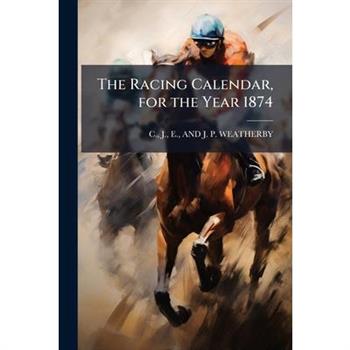



![A Treatise On the Breeding, Training and Management of Horses [By W. Flint] A Treatise On the Breeding, Training and Management of Horses [By W. Flint]](https://cdn.kingstone.com.tw/english/images/product/6706/9781023856706m.jpg?Q=24785)

![A Treatise On the Breeding, Training and Management of Horses [By W. Flint] A Treatise On the Breeding, Training and Management of Horses [By W. Flint]](https://cdn.kingstone.com.tw/english/images/product/1572/9781023851572m.jpg?Q=6070d)

